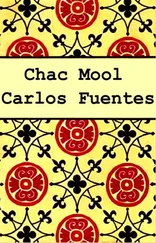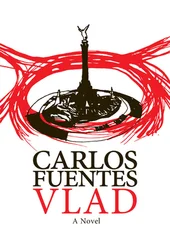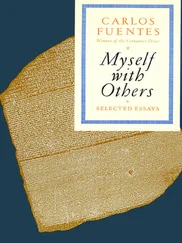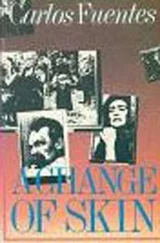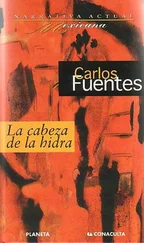We are all subject to the test of the Other. We see but we are also seen. Over and over again, we find ourselves facing the things that we are not — in other words, things that are different. We learn that the only identities that do not change are dead identities. All of us are in the process of being. Nothing can make us understand — or reject — this reality better than the movement that has increasingly come to define life in the twenty-first century: the massive migrations from South to North and East to West. Nothing tests our prejudices, our generosity, and our capacity to give and receive in quite the way this phenomenon does.
We witness the reemergence of fascism, exclusion, and pogroms, anti-Semitism, anti-Islamism, anti — Latin Americanism — all of them violent forms of xenophobia or hostility not only toward foreigners but, in a larger sense, toward all that is different. Homophobia, misogyny, racism. In the name of what? The supposed purity of a superior race, an untouchable national identity, a parthenogenic culture that conceives of itself as free of external contamination. National purity? In a France that is Gallic, Latin, Germanic? A France that is as Jewish as Chagall, as Spanish as Picasso, as Italian as Modigliani, as Czech as Kundera, as Arab as Ben-Jeleum, as Romanian as Ionesco, as Argentinian as Cortázar, as German as Max Ernst, as Russian as Diaghilev? National purity in a Celto-Iberian, Phoenician, Greek, Roman, Muslim, Jewish, Christian, and Gothic Spain? Exclusionary purity in an indigenous, European, African, multiracial, mulatto Latin America?
An isolated culture will perish rapidly. It may become folklore, madness, or experimental theater. Incompetence and lack of comparative elements can weaken us irreparably and, most of all, degrade us when we carry the denial of foreign identities to the most extreme levels of horror, to the realm of the concentration camp and the Holocaust.
Nothing, however, brings together the dangers of xenophobia quite like the opportunities presented by migrant labor.
We celebrate the so-called globalization process because it facilitates the movement of goods, services, and securities around the world in a truly extraordinary manner. Things are free to circulate. But workers, human beings, are not.
John Kenneth Galbraith, professor emeritus at Harvard University, reminds us that migration is a phenomenon that benefits both the country that receives the migrants as well as the country that sees them off.
Between 1846 and 1906, 52 million émigrés left the European continent. Sweden, one of Europe’s poorest nations in the nineteenth century, became one of its most prosperous after massive numbers of its neediest citizens emigrated to North America.
Irish immigration, in the wake of the potato famine that caused half the Irish population to die of starvation in 1845, benefited both the United States and Ireland, which is now a prosperous republic that made the leap from an agrarian to a technology and service economy. Today Ireland has had to attract foreign workers to help maintain this growth pattern.
In today’s world, migration is almost uniformly a movement from South to North. But the reasons behind migration remain the same as ever: the need to escape local poverty and break the cycle of hopelessness.
In today’s world, just as before, the migrant obeys what is known as the “pull factor”: the First World economy’s demand for workers who can fill jobs that can no longer be filled by those in the domestic labor force — because they have grown old, because they refuse to perform certain kinds of tasks, or because they have achieved a more comfortable, technically advanced professional status.
Another reason is the compelling illusion of prosperity that is promoted on the television screens, magazines, advertisements, and movies of the societies of the Northern Hemisphere. Some ten years ago, when Albanian émigrés, traveling by boat, reached the Italian coast, the first thing they asked of the authorities there was: “Show us the way to Dallas.”
But the migrant laborer never makes it to Dallas. Nor to Disneyland. More and more they are becoming victims of racial violence. The Turkish worker in Germany, the Algerian worker in France, the Mexican worker in Arizona, the black worker in Italy, the North African worker in Spain. No ethical development policy or properly managed globalization program can neglect to include in its considerations the protection due to the migrant worker — for that is exactly what he or she is: a worker, not a criminal.
For five hundred years, the West traveled South and East, imposing its economic and political will upon peripheral cultures, never asking anyone’s permission.
Now, those exploited cultures are returning to the West, effectively testing the values that the West itself championed as universal: freedom of movement, freedom of markets based on supply and demand of both workers and goods, and respect for the human rights of each and every migrant worker.
I repeat, instantaneous global interaction and communication are not possible without simultaneous, instantaneous global migration.
One of the great novels of the Spanish language in the twentieth century anticipated this trend and elevated it to dizzying dramatic heights. I am referring to Paisajes después de la batalla ( Landscapes After the Battle ), Juan Goytisolo’s remarkable book published in 1982. In this work, Goytisolo translates one of the greatest and oldest novelistic traditions — the theme of displacement — to the modern city, its unwanted immigrants and its challenge to any and all notions of purity, be it linguistic, sexual, culinary, or ethereal. Goytisolo is able to imagine the physical space of this new mixed-race city: both Western and Eastern, Southern and Northern. And he gives a voice to each and every one of its inhabitants.
Whether we like it or not, the polycultural city is already here; it is among us. The energy of the Hispanic cities of the United States — Los Angeles, Miami, Chicago — is inextricable from their heterogeneity. Los Angeles, which is not only a Hispanic but a Korean, Vietnamese, Japanese, and Chinese city, will be the Byzantium of the twenty-first century, beckoning from its border with Mexico (which is also its border with all of Latin America) to the great community of the Pacific, toward Vladivostok, Tokyo, Shanghai, Hanoi. .
I believe in the questions posed by a fraternal act surrounded by abyss. Perhaps there is another voice out there, and perhaps it is also mine. Perhaps there is some other historical moment that I can affect and that I can be affected by. Are there not other faiths, other stories, other dreams that may be the same as my own?
We exist in the world, we live with others, we live in history and we will have to defend our memory, our desires, and our presence on this earth for the sake of the continuity of life. Xenophobia obstructs and assassinates life.
Cultures influence one another. Cultures perish when they exist in isolation, and they prosper in communication. As citizens, as men and as women from both worlds — the global and the local — it is incumbent upon us to challenge prejudices, to broaden our own limits, to increase our capacity for giving and receiving, and to open our minds to all that we perceive as foreign. If the locality is weak, the globality won’t work. For this concept to come to life we must embrace the cultures of the Other so that the Other may embrace our own. Let us remember, at this dawn of a new century, that history is not over. We live in a continually incomplete history. The lesson of our unfinished humanity is that when we exclude we are made poorer, and when we include we are made richer. Will we have time to discover, touch, count the number of our brothers and sisters that we can say we have embraced and counted among us? Because none of us will ever be able to find the humanity within us unless we are able to find it first in others.
Читать дальше

